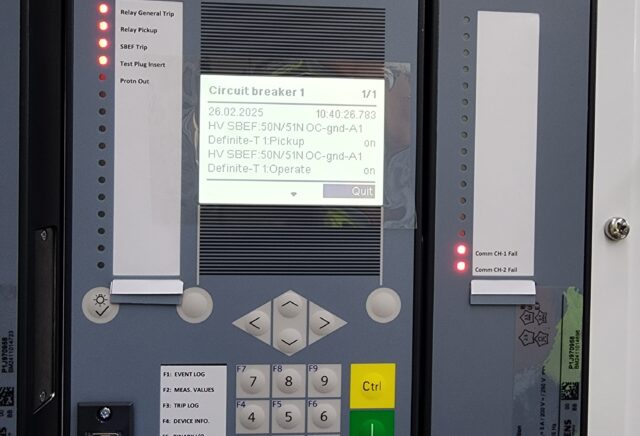1. Introduction
The transformation of modern power systems-driven by the proliferation of renewable energy, decentralized generation, and smart grid technologies-necessitates more adaptive and intelligent protection mechanisms. Artificial Intelligence (AI) has emerged as a powerful tool in addressing the limitations of conventional protection schemes. This report outlines the current trends, development, implementation strategies, and impacts of AI in the domain of electrical power system protection.
2. Trends in AI Adoption for Power System Protection
2.1. Smart Grid Integration
AI technologies are being increasingly integrated into smart grids to manage the complex, real-time variability in load and generation. AI's ability to adapt to system changes makes it ideal for dynamic grid environments.
2.2. Big Data and IoT Synergy
Advanced metering infrastructure (AMI), Phasor Measurement Units (PMUs), and Internet of Things (IoT) devices generate large volumes of data. AI algorithms can process this data to detect patterns, classify faults, and forecast potential failures.
2.3. Shift Toward Predictive Protection
Traditional protection relies on preset rules and thresholds. AI enables predictive, self-learning protection mechanisms that adapt to real-time system changes and anticipate faults before they propagate.
3. Development of AI-Based Protection Techniques
3.1. AI Models and Algorithms
- Machine Learning (ML): Employed for fault classification, disturbance recognition, and anomaly detection. Common ML models include:
- Support Vector Machines (SVM)
- Decision Trees (DT)
- Random Forests
- Deep Learning (DL): Includes advanced neural networks such as:
- Convolutional Neural Networks (CNN) for waveform recognition
- Recurrent Neural Networks (RNN) for time-series fault prediction
- Fuzzy Logic and Expert Systems: Useful in environments with uncertainty and imprecise input data.
- Reinforcement Learning: Allows systems to learn optimal protection actions through iterative interactions with grid simulations.
3.2. Training and Validation
AI models are trained using data from historical grid events, simulation models, and Real-Time Digital Simulators (RTDS). These datasets help AI models generalize to real-world fault scenarios.
4. Implementation in Power System Protection Schemes
4.1. Key Applications
- Fault Detection and Classification: Accurate identification of fault types, including Line-to-Ground (LG), Line-to-Line (LL), Double Line-to-Ground (LLG), and Three-Phase-to-Ground (LLLG).
- Distance Protection Enhancement: AI refines impedance calculations, improving selectivity in transmission line protection.
- Breaker Failure Protection: Predicts circuit breaker failures and enables timely activation of backup systems.
- Islanding Detection: AI identifies unintended islanding conditions faster than traditional methods.
- Adaptive Relay Settings: AI automatically adjusts relay settings based on network topology and load conditions.
4.2. Integration with Substation Automation
- AI algorithms are embedded within Intelligent Electronic Devices (IEDs) and Substation Automation Systems (SAS).
- AI is compatible with IEC 61850 protocols for communication and interoperability.
- Edge and fog computing paradigms allow decentralized AI execution at or near the protection equipment.
5. Impact on Existing Protection Schemes
5.1. Advantages
- High Accuracy: AI can differentiate between similar waveform signatures, improving fault classification accuracy.
- Real-Time Response: AI enables rapid detection and isolation of faults.
- System Resilience: AI supports self-healing grid functions by initiating automated fault recovery processes.
- Reduced Human Intervention: Minimizes errors from manual fault analysis and relay coordination.
5.2. Challenges
- Model Explainability: Many AI models function as "black boxes," which raises issues in high-stakes decisions such as grid protection.
- Cybersecurity: AI-driven systems require robust defenses against manipulation or attacks.
- Data Requirements: AI accuracy depends on the quality and diversity of training data.
- Standardization Gaps: Absence of universal frameworks for AI integration in protection systems poses a risk to consistency and compliance.
6. Standardization and Regulatory Outlook
Organizations like the IEEE and IEC are actively working on standardization:
- IEEE P2807: Guide for the Application of Artificial Intelligence in Power Systems
- IEC Technical Committees: Working on AI inclusion in protection relay standards and testing methodologies.
Future work involves:
- Validating AI models for mission-critical protection
- Developing hybrid systems combining AI and conventional protection
- Enhancing transparency and explainability in AI decisions
7. Conclusion
AI is poised to revolutionize electrical power system protection. It enables faster, smarter, and more adaptive responses to faults and dynamic grid conditions. While integration challenges remain, the benefits in terms of resilience, reliability, and intelligence make AI a critical component in next-generation protection strategies.
Strategic development, validation, and regulation will be essential to fully realize AI's potential while maintaining the integrity and safety of power systems.
8. Acronyms and Definitions
| Acronym | Definition |
|---|---|
| AI | Artificial Intelligence |
| AMI | Advanced Metering Infrastructure |
| CNN | Convolutional Neural Network |
| DL | Deep Learning |
| DT | Decision Tree |
| IED | Intelligent Electronic Device |
| IEC | International Electrotechnical Commission |
| IoT | Internet of Things |
| LG | Line-to-Ground Fault |
| LL | Line-to-Line Fault |
| LLG | Line-to-Line-to-Ground Fault |
| LLLG | Three-Line-to-Ground Fault |
| ML | Machine Learning |
| PMU | Phasor Measurement Unit |
| RNN | Recurrent Neural Network |
| RTDS | Real-Time Digital Simulator |
| SAS | Substation Automation System |
| SVM | Support Vector Machine |
